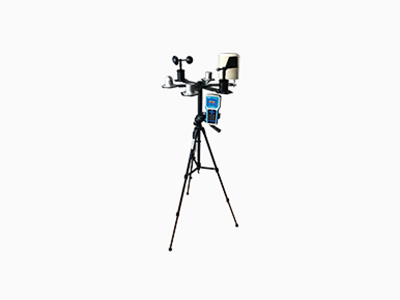Weather forecasting plays a crucial role in our daily lives, impacting everything from agriculture and transportation to disaster preparedness. Over the years, significant advancements in technology have revolutionized the way weather data is collected, analyzed, and forecasted. One such technological innovation that has paved the way for accurate weather forecasts is the development of advanced weather stations. This article explores the significance of advanced weather stations in enabling accurate weather predictions and their impact on various sectors.

- Understanding Advanced Weather Stations:
- Definition and components of advanced weather stations
- Evolution of weather station technology
- Importance of accurate weather data for forecasting
- The Role of Advanced Weather Stations in Weather Forecasting:
- Collection of meteorological data (temperature, humidity, wind speed, atmospheric pressure, etc.)
- Real-time monitoring and data transmission capabilities
- Integration with satellites and radar systems for comprehensive data analysis
- Benefits of Advanced Weather Stations:
- Improved accuracy and reliability in weather forecasting
- Early warning systems for severe weather events
- Enhanced planning and decision-making in various sectors
- Efficient resource management in agriculture, transportation, and energy sectors
- Integration of Advanced Weather Stations with Other Technologies:
- Artificial intelligence and machine learning algorithms for data analysis
- Internet of Things (IoT) connectivity for seamless data transfer
- Remote sensing technologies for comprehensive weather monitoring
- Applications of Advanced Weather Stations:
- Agriculture: Optimizing planting and harvesting decisions, efficient water management, prevention of crop diseases
- Aviation: Safer flight operations, turbulence detection, and avoidance
- Disaster preparedness and emergency response: Timely warnings for hurricanes, tornadoes, floods, etc.
- Urban planning: Mitigation of heat islands, efficient energy consumption
- Case Studies and Success Stories:
Examples of countries or regions utilizing advanced weather stations for accurate forecasting
Impact of accurate weather forecasts on disaster management and early warning systems
Testimonials from meteorological experts and professionals on the benefits of advanced weather stations
- Challenges and Future Outlook:
Cost considerations and maintenance of advanced weather station networks
Data management and analysis challenges
Continual advancements in weather station technology
Potential for integration with emerging technologies like 5G and big data analytics
Conclusion: Advanced weather stations have revolutionized weather forecasting, enabling us to make informed decisions based on accurate and timely information. These stations, equipped with sophisticated sensors and communication capabilities, have transformed the way meteorological data is collected, analyzed, and disseminated. As technology continues to advance, the integration of advanced weather stations with other cutting-edge technologies holds immense potential for further improving the accuracy and reliability of weather forecasts. With accurate weather forecasts at our disposal, we can better prepare for and mitigate the impacts of severe weather events, ultimately enhancing our safety, productivity, and overall quality of life.
This comprehensive article highlights the significance of advanced weather stations in accurate weather forecasting and emphasizes their role in various sectors. By harnessing the power of advanced technology, these weather stations are paving the way for more reliable predictions, leading to improved disaster management, efficient resource utilization, and informed decision-making across industries.